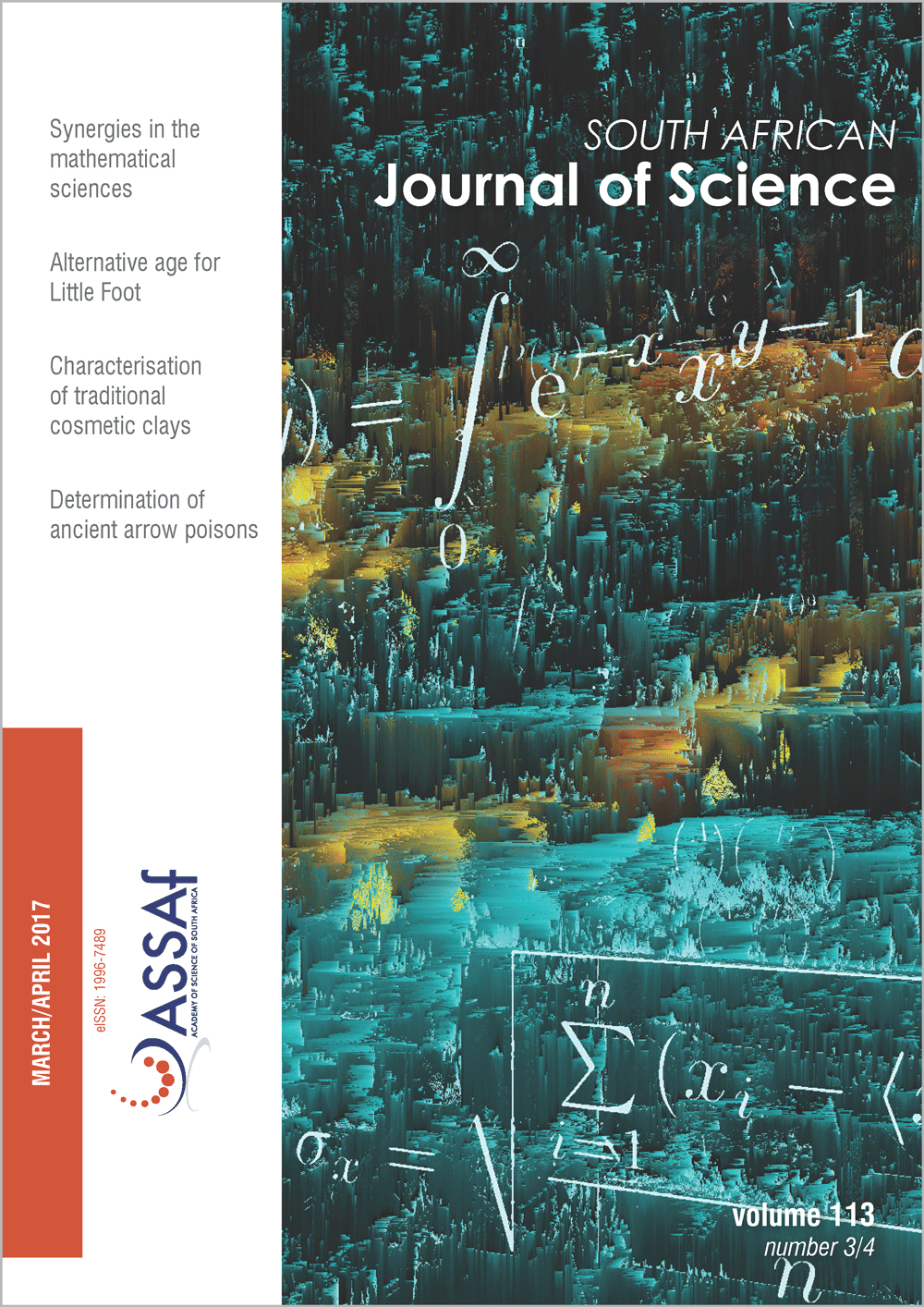The age of fossil StW573 (‘Little Foot’): An alternative interpretation of 26Al/10Be burial data
DOI:
https://doi.org/10.17159/sajs.2017/20160085Keywords:
burial dating, cosmogenic nuclides, muons, Australopithecus prometheus, burial historyAbstract
Following the publication (Granger DE et al., Nature 2015;522:85–88) of an 26Al/10Be burial isochron age of 3.67±0.16 Ma for the sediments encasing hominin fossil StW573 (‘Little Foot’), we consider data on chert samples presented in that publication to explore alternative age interpretations. 10Be and 26Al concentrations determined on individual chert fragments within the sediments were calculated back in time, and data from one of these fragments point to a maximum age of 2.8 Ma for the sediment package and therefore also for the fossil. An alternative hypothesis is explored, which involves re-deposition and mixing of sediment that had previously collected over time in an upper chamber, which has since been eroded. We show that it is possible for such a scenario to yield ultimately an isochron indicating an apparent age much older than the depositional age of the sediments around the fossil. A possible scenario for deposition of StW573 in Member 2 would involve the formation of an opening between the Silberberg Grotto and an upper chamber. Not only could such an opening have acted as a death trap, but it could also have disturbed the sedimentological balance in the cave, allowing unconsolidated sediment to be washed into the Silberberg Grotto. This two-staged burial model would thus allow a younger age for the fossil, consistent with the sedimentology of the deposit. This alternative age is also not in contradiction to available faunal and palaeomagnetic data.
Significance:- Data on chert samples taken close to StW573 impose a maximum age for the fossil of 2.8 Ma – younger than the 3.67 Ma originally reported. We propose and explore a two-stage burial scenario to resolve the inconsistency and to reopen the discussion on the age of fossil StW573.
Published
Issue
Section
License

All articles are published under a Creative Commons Attribution 4.0 International Licence
Copyright is retained by the authors. Readers are welcome to reproduce, share and adapt the content without permission provided the source is attributed.
Disclaimer: The publisher and editors accept no responsibility for statements made by the authors
How to Cite
- Abstract 4311
- PDF 571
- EPUB 195
- XML 267












.png)